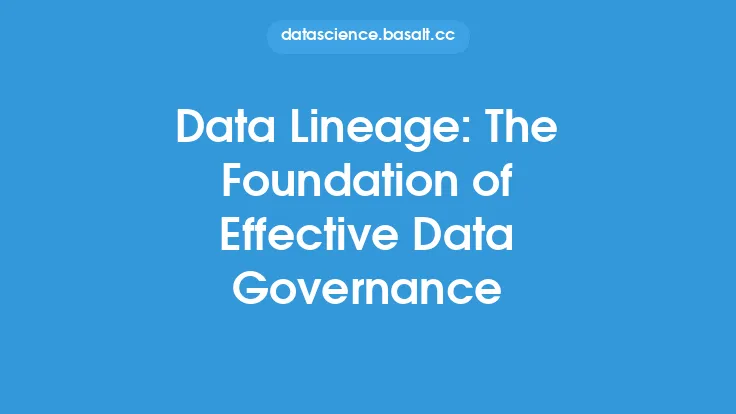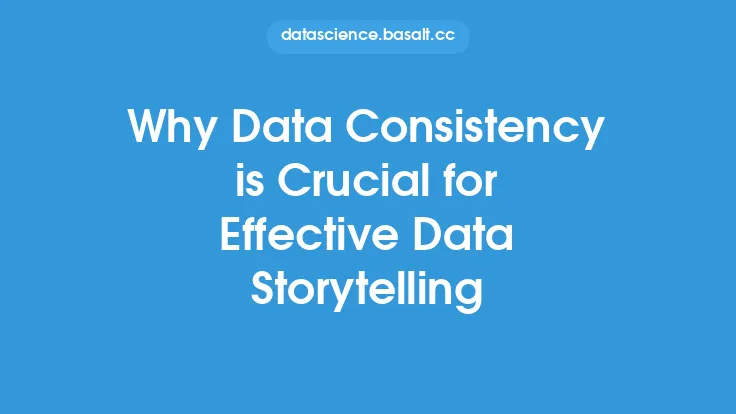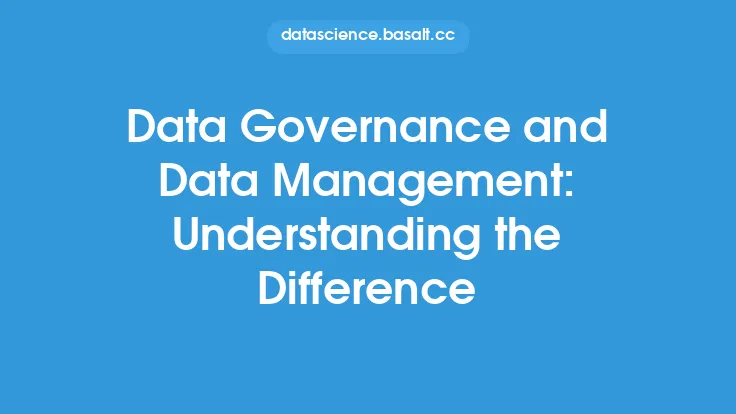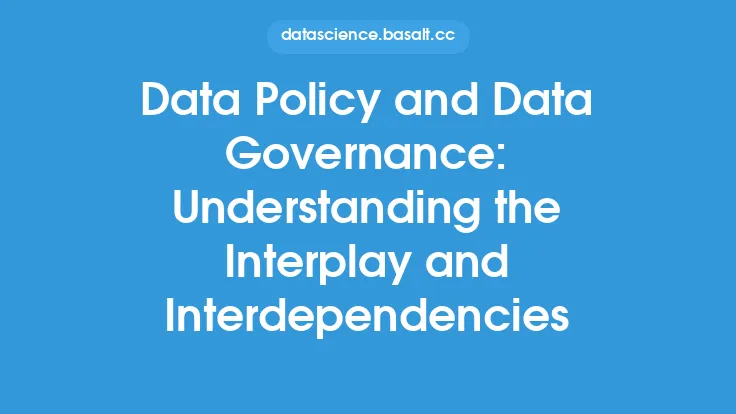Data standards are the foundation upon which effective data governance is built. They provide a common language and framework for organizing, storing, and exchanging data, enabling organizations to ensure consistency, accuracy, and reliability across their data assets. In essence, data standards define the rules and guidelines for data collection, storage, and use, facilitating the creation of high-quality data that can be trusted and leveraged to inform business decisions.
Introduction to Data Standards
Data standards can be thought of as a set of specifications or guidelines that define the structure, format, and content of data. They can be applied to various aspects of data management, including data models, data dictionaries, data exchange protocols, and data storage formats. By establishing a common set of standards, organizations can ensure that their data is consistent, complete, and accurate, which is critical for making informed business decisions. Data standards can be categorized into different types, including syntactic, semantic, and pragmatic standards. Syntactic standards define the format and structure of data, while semantic standards define the meaning and interpretation of data. Pragmatic standards, on the other hand, define the context and usage of data.
Benefits of Data Standards
The benefits of data standards are numerous and well-documented. By implementing data standards, organizations can improve the quality and consistency of their data, reduce errors and inconsistencies, and increase the efficiency of their data management processes. Data standards also facilitate data sharing and exchange, both within and outside the organization, which can lead to new business opportunities and improved collaboration. Furthermore, data standards can help organizations to comply with regulatory requirements and industry standards, reducing the risk of non-compliance and associated penalties. Perhaps most importantly, data standards provide a foundation for effective data governance, enabling organizations to manage their data assets in a consistent and controlled manner.
Types of Data Standards
There are several types of data standards, each with its own specific purpose and application. Some common types of data standards include data format standards, data exchange standards, data storage standards, and data quality standards. Data format standards define the structure and format of data, such as XML or JSON. Data exchange standards, on the other hand, define the protocols and formats for exchanging data between systems, such as APIs or EDI. Data storage standards define the requirements for storing and managing data, such as data warehousing or cloud storage. Data quality standards, meanwhile, define the criteria for ensuring the accuracy, completeness, and consistency of data.
Data Standards Frameworks
A data standards framework is a structured approach to implementing and managing data standards within an organization. It provides a set of guidelines, policies, and procedures for defining, implementing, and maintaining data standards. A typical data standards framework includes several components, including a data governance policy, a data standards catalog, a data quality framework, and a data management process. The data governance policy defines the overall approach to data governance, including the roles and responsibilities of stakeholders. The data standards catalog provides a repository of approved data standards, while the data quality framework defines the criteria for ensuring data quality. The data management process, meanwhile, defines the procedures for managing data throughout its lifecycle.
Implementing Data Standards
Implementing data standards requires a structured approach that involves several steps, including defining the scope and requirements, identifying the relevant stakeholders, and developing a plan for implementation. The first step is to define the scope and requirements of the data standards, including the types of data to be standardized and the stakeholders involved. The next step is to identify the relevant stakeholders, including data owners, data users, and data managers. The implementation plan should include a timeline, milestones, and resources required. It's also essential to establish a governance structure to oversee the implementation and maintenance of data standards.
Challenges and Opportunities
Implementing and maintaining data standards can be challenging, particularly in large and complex organizations. Some common challenges include resistance to change, lack of resources, and conflicting priorities. However, there are also opportunities for innovation and improvement, such as leveraging new technologies and approaches, such as artificial intelligence and machine learning. By embracing these opportunities, organizations can create a culture of data standards that is flexible, adaptable, and responsive to changing business needs.
Best Practices for Data Standards
There are several best practices for implementing and maintaining data standards, including establishing a clear governance structure, defining a comprehensive data standards framework, and providing training and support to stakeholders. It's also essential to monitor and enforce compliance with data standards, using metrics and benchmarks to measure progress. Additionally, organizations should regularly review and update their data standards to ensure they remain relevant and effective. By following these best practices, organizations can create a robust and sustainable data standards program that supports their business objectives and strategic goals.
Conclusion
In conclusion, data standards are a critical component of effective data governance, providing a foundation for ensuring consistency, accuracy, and reliability across an organization's data assets. By understanding the different types of data standards, implementing a data standards framework, and following best practices, organizations can create a culture of data standards that supports their business objectives and strategic goals. As data continues to play an increasingly important role in business decision-making, the importance of data standards will only continue to grow, making it essential for organizations to prioritize their development and implementation.





